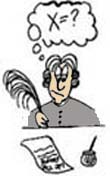

|
|
|
|
First Steps in Solving Open-Ended Problems
From Strategies for Creative Problem
Solving by H. Scott Fogler and Steven E. LeBlanc, 1995
|
Write an initial problem statement. Include information on what you are to solve, and consider why you need to solve the problem. |

|
|
Make sure you are proceeding to solve the real problem as opposed to the perceived problem (chapter 3). Carry out one or more of the following:
|

|
|
Understand what conceptual blocks can occur so that you will be aware of them when they surface.
|

|
Brainstorm
|

|
Analogy
|

|
|
Organize the ideas/solutions that have been generated.
|

|
Cross Fertilize
|

|
|
Futuring. Today's constraints (e.g. computing speed, communications) may be limiting the generation of creative solutions. Think to the future when these constraints may no longer exist. Remove all possible constraints from the problem statement and solution criteria. |

|
|
Incubate. Take a break. Let your subconscious work on the problem while you do something else. Sometimes all you need is a breather to achieve that final breakthrough! |

|
Decision Making
|

|
|
Planning
|

|
Follow Through (chapter 6)
|

|
|
Evaluate (chapter 7)
|

|
![]() See an example of the OEP
Algorithm in action, as applied to the
Cobra Problem from the
Chemical Reaction Engineering Web Site.
See an example of the OEP
Algorithm in action, as applied to the
Cobra Problem from the
Chemical Reaction Engineering Web Site.
![]() Bloom's Taxonomy
can help you classify your problem and determine a method of attack.
Bloom's Taxonomy
can help you classify your problem and determine a method of attack.